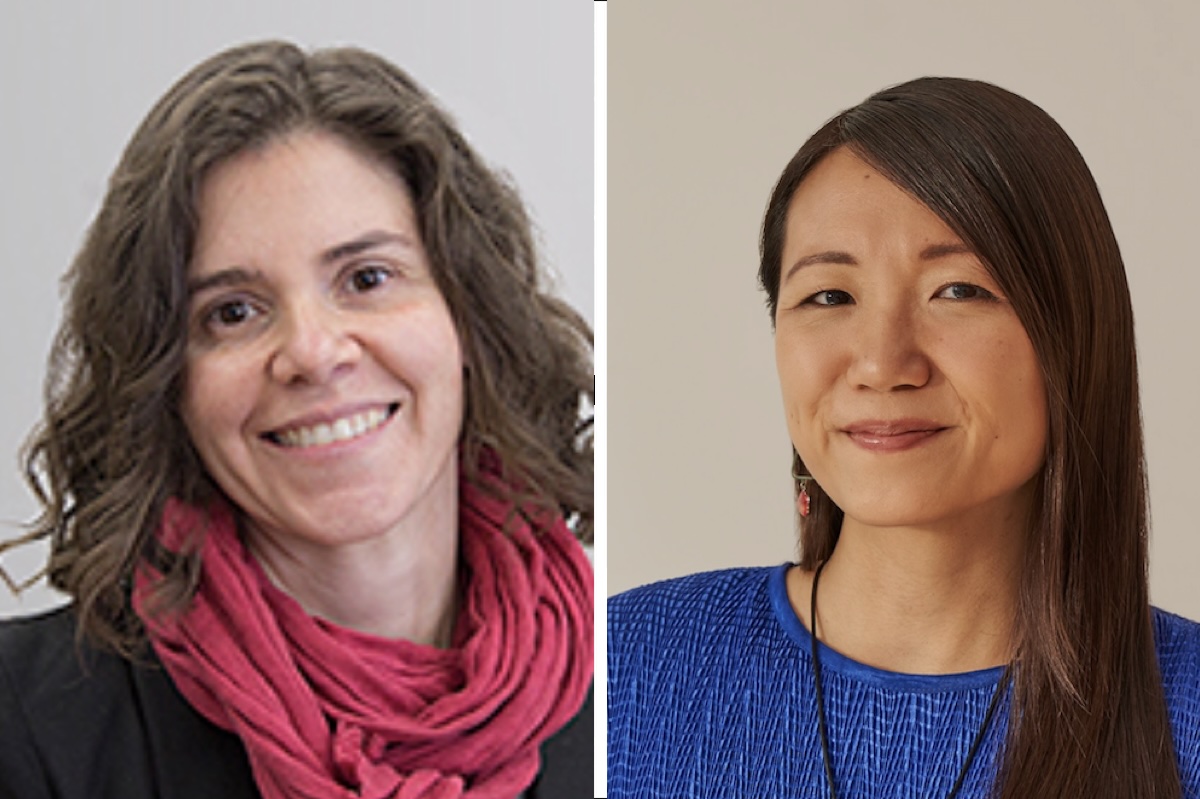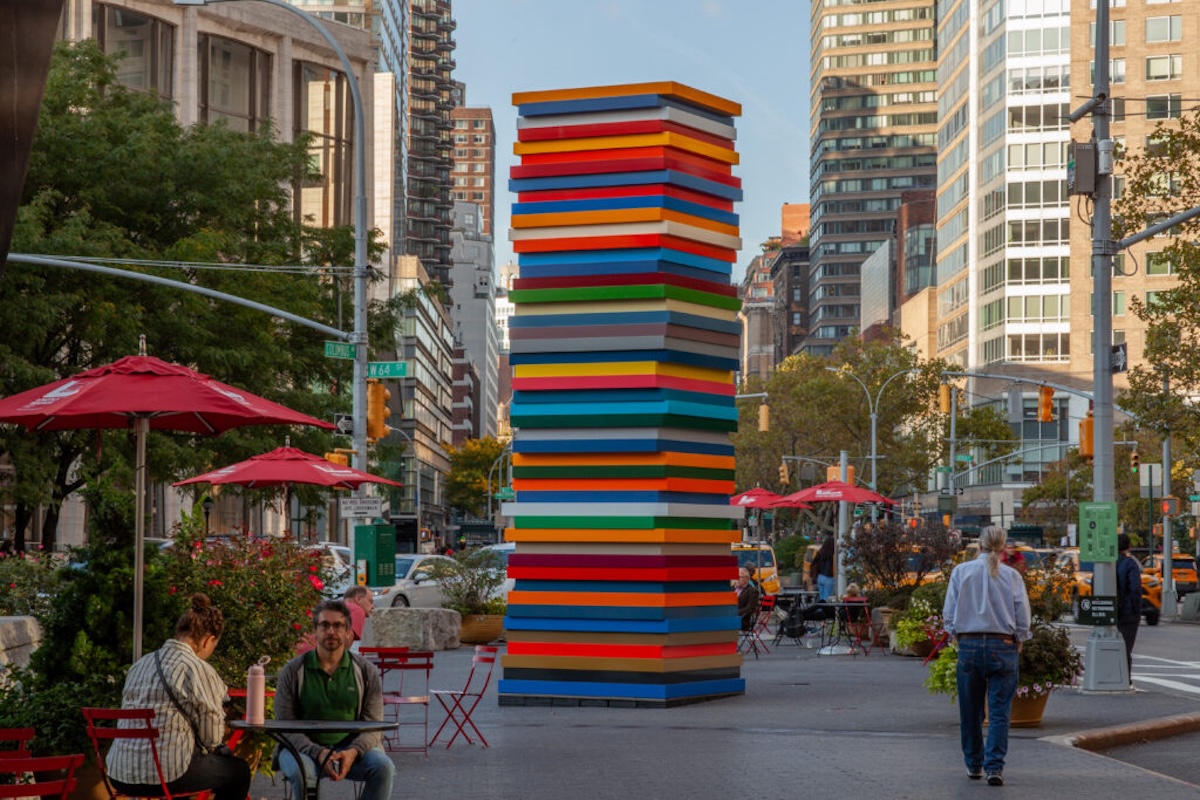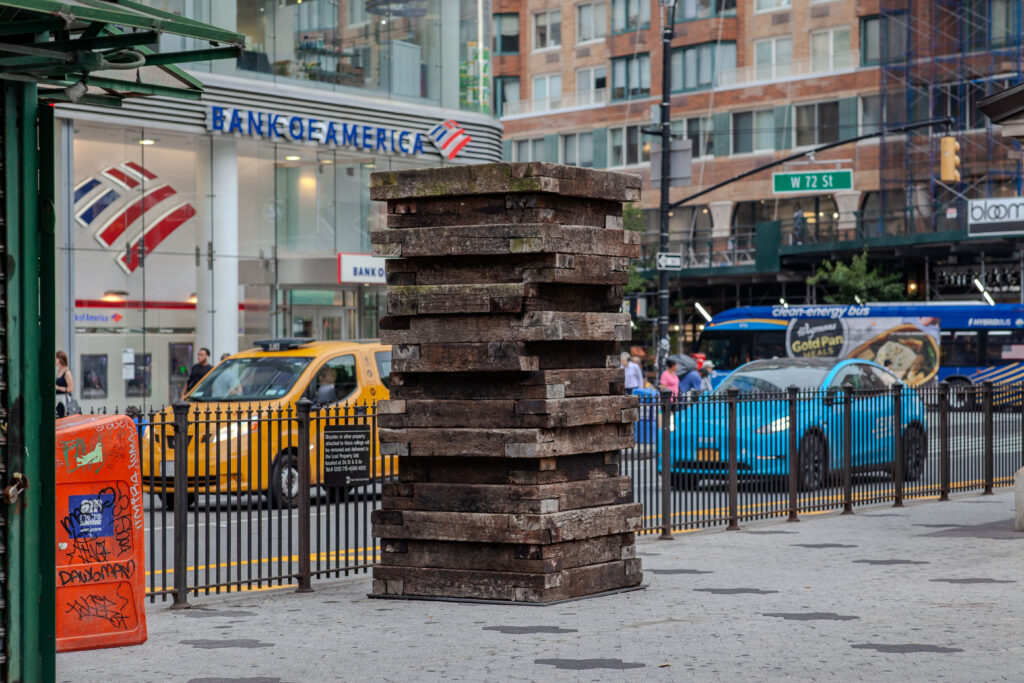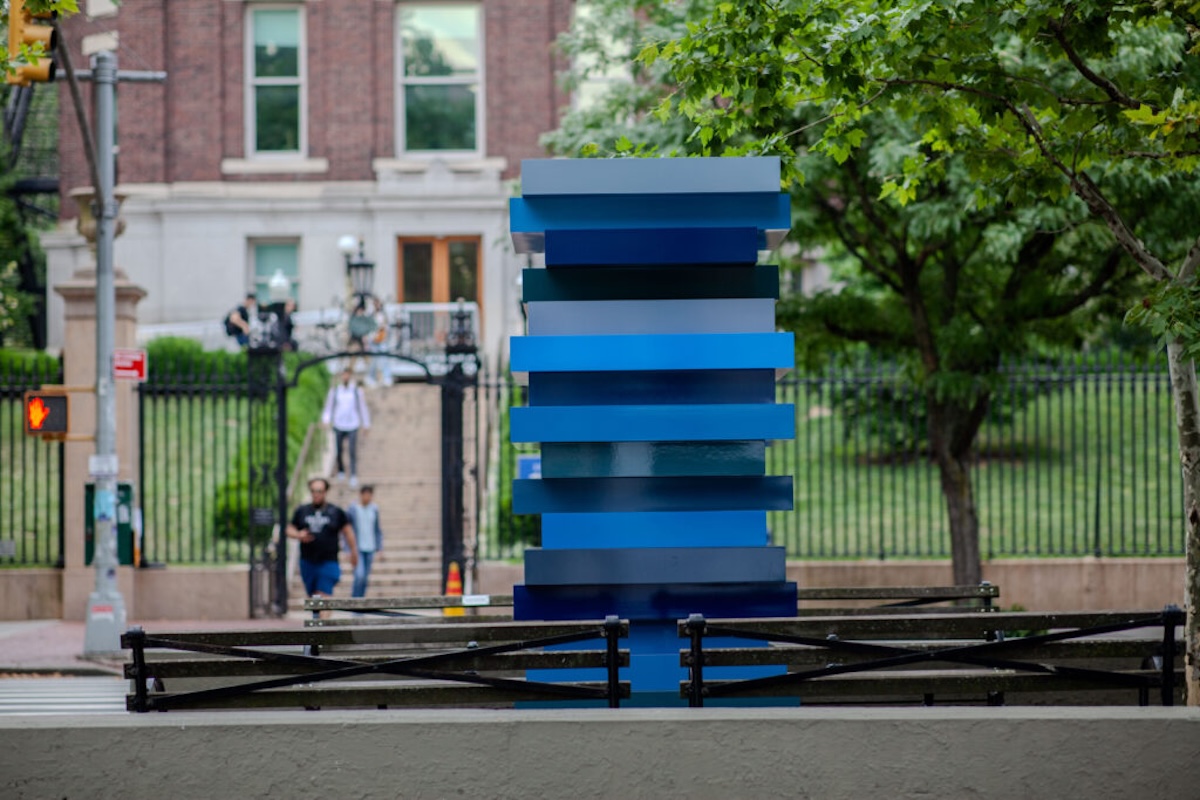A curriculum from TC’s Olga Hubard and Queena Ko is helping New York City students engage with public art on a deeper level. Designed for the Broadway Mall Association as a companion to its “Sean Scully: Broadway Shuffle” exhibition — which displays seven monumental sculptures from the renowned Irish-born artist on upper Broadway in Manhattan — the K-12 curriculum aims to foster thoughtful discussion of Scully’s work and illustrate that anyone can have powerful experiences with art. “Our task as educators is to create the circumstances for everyone to experience art meaningfully,” says Hubard, Associate Professor of Art and Art Education.

Olga Hubard, Associate Professor of Art Education, and Queena Ko, part-time instructor of Art and Art Education. (Photos: TC Archives)
To do so, Hubard collaborated with Ko, director of education at the Noguchi Museum and part-time instructor in the Art and Art Education program, as well as TC students Filippa Christofalou and Pauline Kwon. Guided by a belief that engaging with art is a communal, active experience that does not require specialized knowledge or credentials, the designers created lessons that offer points of connection for students and encourage inquiry.
Written for K-12 teachers in NYC schools, the comprehensive curriculum provides in-depth lessons, called “Public Art Encounters,” for three of the featured sculptures: "48," created specifically for this exhibition and located in front of the Lincoln Center; "Sleeper Stack 2" located on 72nd Street in honor of the historic train station; and "Stack Blues," located just three blocks from TC’s campus and created in honor of Arthur Danto, a philosopher and former Columbia University professor. In addition to engagement prompts for the other works in the exhibition, the curriculum also deepens students’ connections with Scully’s work through a series of extension activities, called "Explorations", which invite learners to delve into broader themes from Sean Scully's art practice at school, at home, or on-site with the sculpture.
Organized by the Broadway Mall Association in partnership with NYC Parks’ Art in the Parks program and Lisson Gallery, “Broadway Shuffle” is the first show in the U.S. that features only Scully’s sculptures. “Broadway is legendary, and it has been mythologized in art and song,” said Scully, who is best known for his abstract paintings. “I love the idea of my blocks and stacks punctuating the endless rhythm of Broadway.”
As the curriculum designers became more familiar with Scully’s sculptures, which feature materials stacked atop each other, the way they thought about the lessons transformed. “There is a playfulness in Scully’s approach so we shifted gears to a more playful structure,” says Hubard, who runs the Museum Education optional specialization at TC. Similar to how Scully stacked sheets of colored metal or railroad ties into impressive towers, teachers are encouraged to stack activities and exploratory prompts, outlined in the curriculum, to create their own version.
While Scully was a major source of inspiration for the designers “it was never about just teaching what the artist said, believed or did,” says Hubard. “It was about creating spaces for students to engage with some of the ideas and processes the artists engaged with from their own perspectives.”
“Sean Scully: Broadway Shuffle” will be on display through March 2025.


